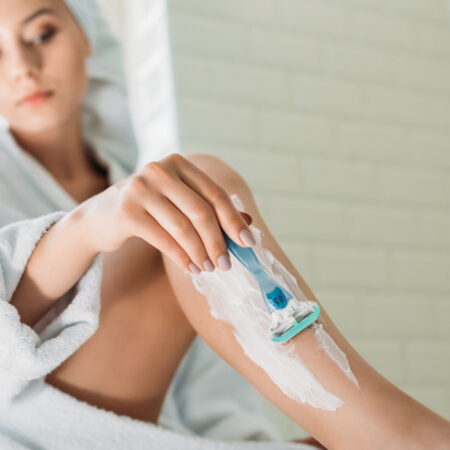Saying that razor bumps suck would be a big understatement. When you shave, you want to end up with smooth, hairless skin—not bumpy, red skin! Razor bumps aren’t just a cosmetic issue, though. They can be painful, and shaving again after developing them is an unpleasant experience that can lead to all kinds of nicks and cuts.
Whether you’re currently dealing with razor bumps or you’re worried that they’ll show up next time you shave, then this guide is for you. We’ll cover everything you need to know so you never have to experience them again.
We’ve put together a prevention guide, as well as a guide on how to get rid of existing bumps. Throughout, we also made sure to answer any other questions you might have about this annoying skin condition.
What Are Razor Bumps?
The term “razor bumps” isn’t exactly scientific, but it’s commonly used day-to-day. It refers to the bumps that can pop up after shaving, as well as after other forms of hair removal. Razor bumps can also be referred to as ingrown hairs, while in medical lingo, they’re called pseudofolliculitis barbae.
As the name suggests, ingrown hairs are hairs that fail to come out of the skin. They fold in on themselves to grow under the skin, leading to a bump at the surface of the skin, often accompanied by inflammation and irritation. You can develop razor bumps anywhere on your body where hair grows, but the most common areas are the legs, face, neck, bikini line, and underarms.
If the razor bumps become infected (usually staph bacteria), they become a condition called folliculitis barbae, which is much more painful and may require antibiotics to treat, as we discuss below.
Razor Bumps vs. Razor Burn
The term razor bumps is sometimes used interchangeably with “razor burn,” and while these two issues are related, they’re still different from each other. Medical professionals consider razor burn to be an instance of irritant contact dermatitis, which is a type of rash caused by external irritation. In this case, it’s usually a result of poor shaving technique.
Timeline
The main way to tell the difference between razor burn and razor bumps is to look at the timeline. Razor burn usually shows up just a few minutes after shaving, and it then sticks around for a few days before fading. Razor bumps, on the other hand, show up a few days or up to a week after shaving, and they take a much longer time to fade.
The two issues often come hand-in-hand. You might have razor burn immediately after shaving, and then have razor bumps pop up sometime later. If you follow our razor bump prevention tips, you’ll also reduce your chances of having razor burn.
Appearance and Sensation
Razor bumps and razor burn also look and feel different. Razor burn looks more like a rash, and it stings over a large area. If there are any bumps, they’re usually very small and a little red, like in this photo:
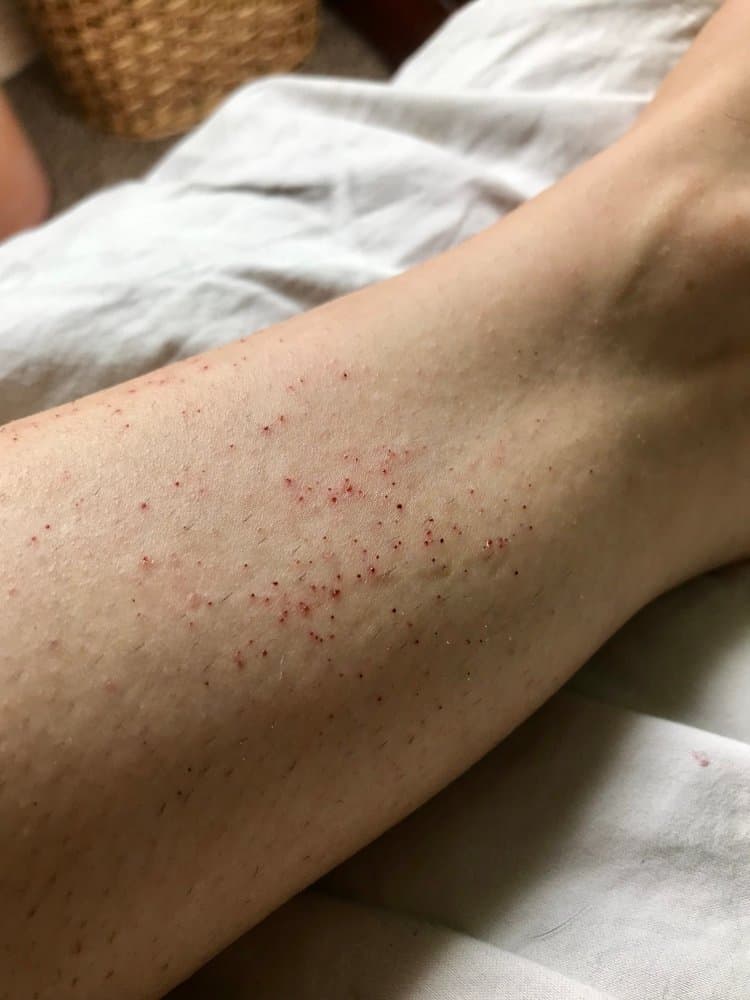
Razor bumps, on the other hand, are much more localized, and they don’t necessarily sting. In more severe cases, it’s possible to end up with razor bumps over a larger area, but it’s not usually the case. They can be mild and close to the surface of the skin, without any stinging or inflammation, in which case they look like this:
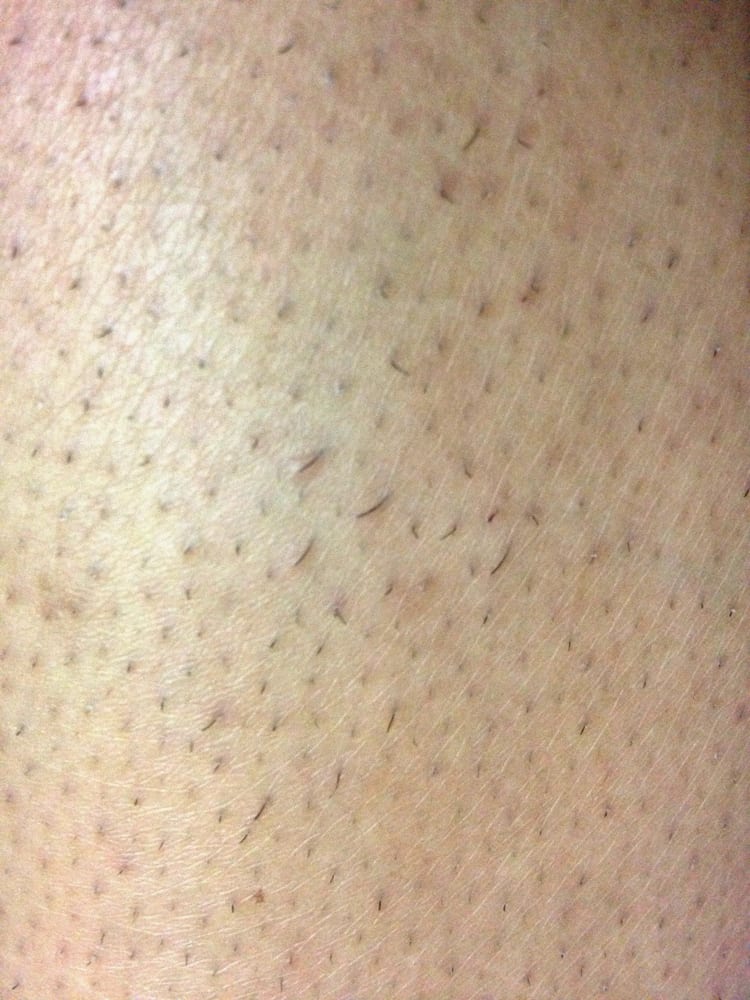
They can also become infected and inflamed, in which case they’ll look more like a pimple or a cyst:
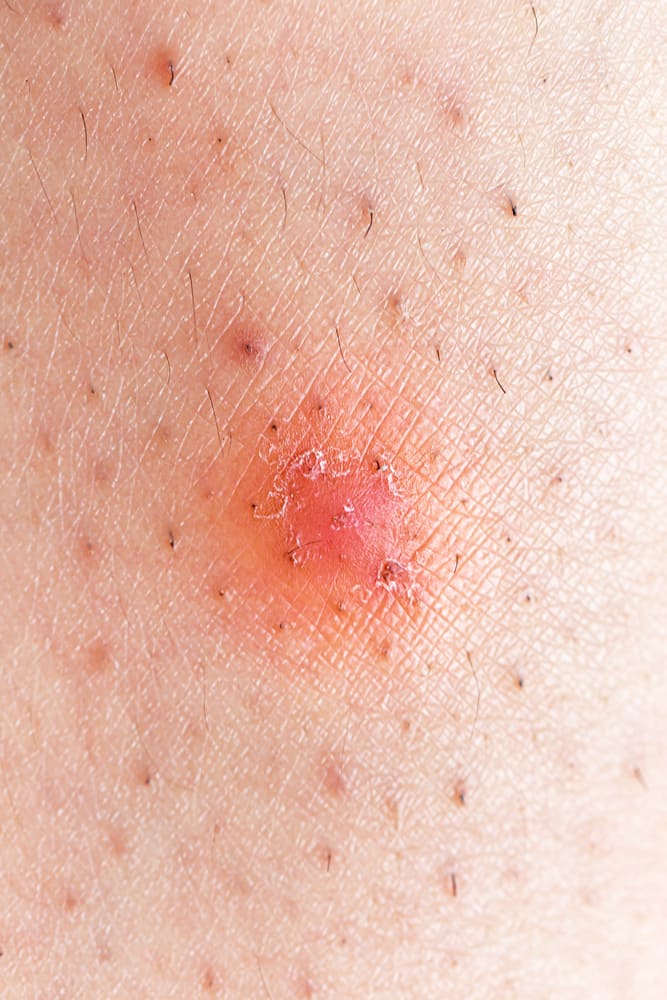
What Causes Razor Bumps?

There are all kinds of skin issues and shaving pitfalls that might be responsible for your razor bumps. As you read through this section, keep in mind that it’s usually a mixture of factors that are responsible.
Your Skin and Hair
The world’s not fair, and part of its unfairness is that some people are just more prone to developing razor bumps than others, either because of their hair or the state of their skin.
- Dead skin (which is often related to having dry or dehydrated skin) strongly correlates with developing razor bumps. The buildup of dead skin blocks the hair follicle, making it easier for the hair to become trapped underneath.
- There are certain skin conditions, like eczema and keratosis pilaris, that make razor bumps a lot more likely because they either disrupt the skin’s ability to shed dead skin cells or because they make the skin more prone to inflammation.
- Finally, those with curly hair are much more susceptible to ingrown hairs, simply because as the hair grows, it’s more likely to curve inwards compared to straight hair. This is the main reason why people of African descent are more likely to experience razor bumps.
Poor Shaving Technique
While some people experience razor bumps even with the best shaving technique, you may still want to consider whether you’re doing any of the things we list here, that can make razor bumps more likely.
- Shaving with a dull razor.
- Using low-quality shaving cream, or not using a shaving cream at all.
- Shaving against the hair growth.
- Shaving with poorly cleaned shaving tools.
Other Hair Removal Methods
Razor bumps are a common result of shaving because it’s one of the most popular hair removal methods. However, they can also pop up after other types of hair removal methods, like waxing, epilating, and using depilatory creams like Nair.
How to Prevent Razor Bumps
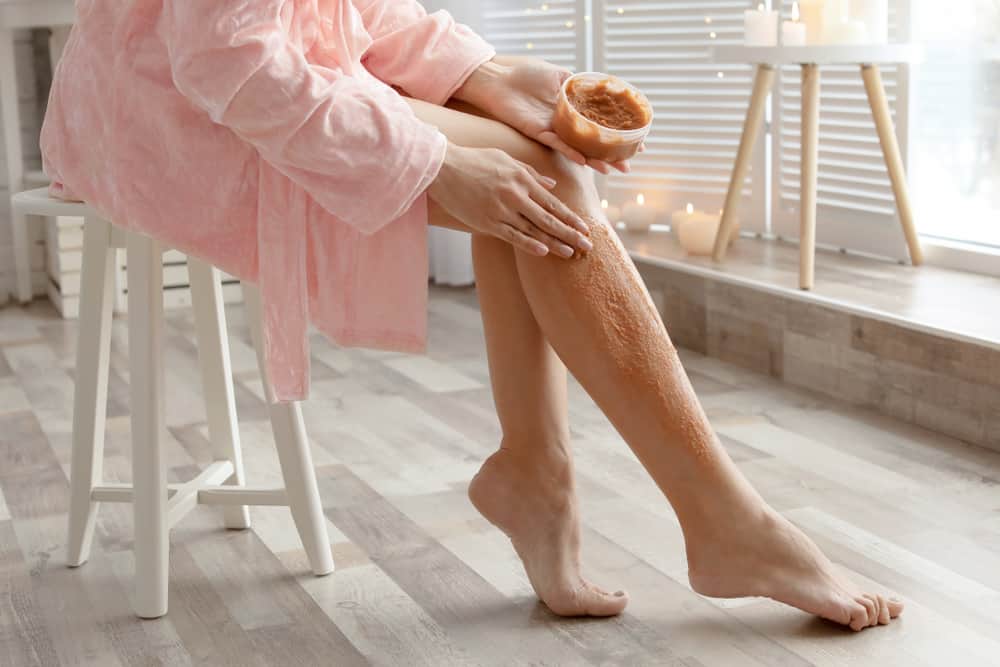
While razor bumps are inevitable for some, there are still a lot of things you can do to try and prevent them. Even if these tips don’t prevent all of your razor bumps, they will still reduce their severity.
Use a Sharp Razor
Your razor is the most important component of your shaving ritual. A sharp blade glides over the skin smoothly and cuts the hair easily, causing less damage to the skin and hair follicles. Because of that, it’s less likely to cause razor bumps or razor burn.
The key to having a sharp razor blade is to choose a high-quality razor that comes with affordable blade refills. This way, you can replace the blades as often as necessary without feeling wasteful or lavish.
Some shoppers love to shave with an old-school double-edge razor like the Heather razor from Edwin Jagger. The single blade causes less wear and tear on the skin, while the blades themselves only cost $0.05-$0.30 each.
If you’d prefer a more modern multi-blade razor for women, we like the Solimo 5-Blade Razor for the moisture-release bar around the blades and the well-priced refills.
Prep Your Skin
These are our must-know prep tips that’ll set you up for razor bump-free shaving
- The best time to shave is in the shower or immediately after the shower, when your skin and hair are both soft from the high concentration of water.
- Shower in lukewarm or cool water, since hot water can be quite irritating. While the old-school approach to shaving calls for hot water, some experts say that cool water leads to a smoother shave and less irritation.
- Making sure your skin and hair are well-moisturized and properly lubricated before shaving is very important. Once you’re ready to shave, slather your skin in a healthy dose of moisturizing shaving cream.
- On days when you don’t shave, you still need to take good care of your skin. Make sure to exfoliate your skin regularly with a gentle body scrub or an exfoliating cream.
- Moisturize your skin every day, especially after the shower while your skin is still damp.
Shave With the Grain

Shaving against the grain is one of the most irritating things we can do to our skin, and it increases the chances that your hair follicles will launch a bumpy rebellion against you. That’s why shaving with the grain of the hair is so important, even though it leads to a less smooth shave.
Our hair rarely just sticks up straight—usually, it lies flat against the skin. By shaving with the grain, what we mean is that you should pull the blade in the same direction in which the hair naturally goes. The razor itself should be on a 30-degree angle against the skin.
It can seem a little weird at first, especially if you’re shaving your legs. Leg hair normally grows downwards towards the feet, while most people learn to shave their legs from the bottom up. Flipping the razor blade over may take some practice, but if you’re prone to razor bumps, it’s worth it.
If you don’t find that it gives you a smooth enough shave, you can shave with the grain first, and then do a second pass against the grain. Doing things in this order will still help to minimize the trauma to the skin.
Shave Less Often
Research has found that while shaving with high-quality razors and prepping well can prevent razor bumps, the most effective prevention method is to shave less frequently. When you shave on a daily basis, your skin doesn’t have much time to heal, not to mention that it forces you to shave skin that is already bumpy and uneven once you develop razor bumps.
By giving your skin a few days to regenerate, you greatly reduce the toll shaving takes, and prevent the chances of bad razor burn or bumps.
Try Other Hair Removal Methods
Some people find that they get razor bumps from shaving but not from waxing, while for others, only epilators will work. If you do try a hair removal method that takes the hair out from the root, you might still experience in-grown hairs, but they’ll take longer to show up when compared to shaving.
In general, we find that electric razors are the least likely to cause ingrown hairs because they don’t get as close to the hair follicle as a typical razor. Unfortunately, they also don’t give as smooth of a shave.
Permanent hair removal methods, like laser and electrolysis, solve all of the problems. They destroy the hair follicle itself, so they are the best (and most expensive) option for preventing razor bumps, since they give smooth, hairless skin for the long term.
While you will still have to shave (and risk some razor bumps) while having the treatments, it won’t take long before you can kiss shaving and razor bumps goodbye.
How to Deal With Razor Bumps
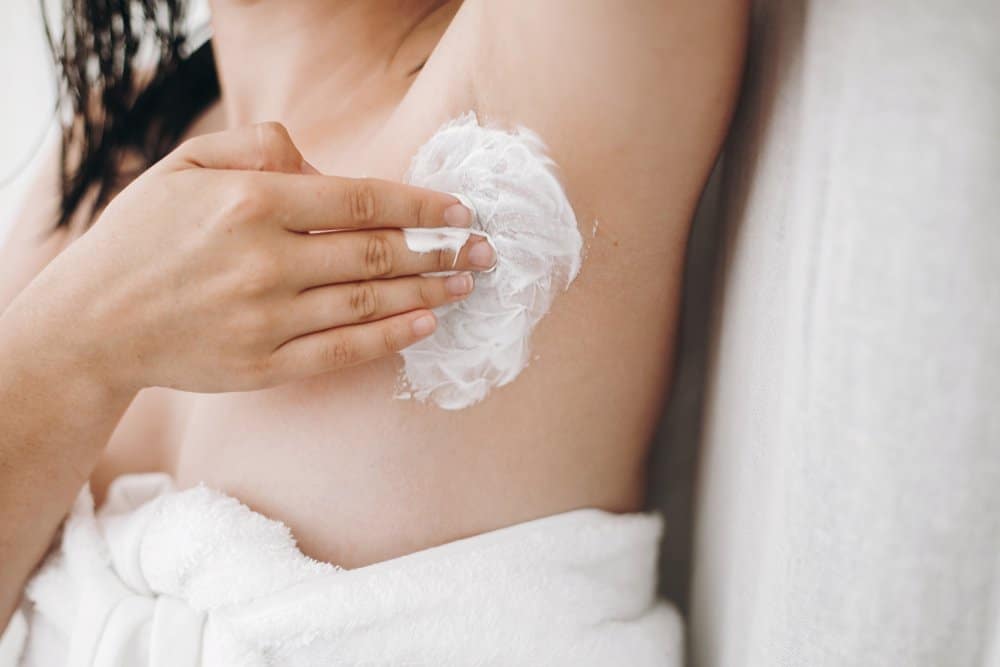
Preventative measures are important, but what if your skin is already covered in annoying bumps? Fear not, we’ve got some treatment advice that should help.
Take a Shaving Break
The first thing you should do when you have razor bumps is take a break from shaving. The razor bumps turn your skin into an uneven surface which increases the chances of irritation from shaving.
This leads to an awful cycle of more irritation and more razor bumps after every time you shave. Ideally, you should wait until the razor bumps are totally gone before shaving again.
Exfoliate Gently
By removing the dead skin built up over your razor bump you can help the in-grown hair pop out more quickly. While your skin is irritated and bumpy, you’ll want to avoid physical exfoliation (although it’s fine for prevention), and instead opt for an exfoliating serum, toner, or cream.
We like the CeraVe SA Lotion because it contains salicylic acid, an exfoliant that cuts through oils and can get deep into the hair follicle, where it can also inhibit the chances of bacterial growth. It also has a skin-soothing effect that’s fantastic if your razor bumps are painful and inflamed.
Other skincare products and topical medications that increase skin cell turnover may also help, including retinoids, glycolic acid, and benzoyl peroxide.
Use Hydrocortisone
If your razor bumps are especially painful and inflamed, you can take things a step further and use hydrocortisone cream. This medication has a rapid skin-soothing effect, so it helps to reduce the swelling and pain of a razor bump.
You don’t want to use a hydrocortisone cream regularly, since long-term use can thin out the skin, but in the short term, it offers wonderful relief that will help the razor bump heal more quickly.
Know When to See a Doctor

It might sound a little extreme, but in some cases, medical treatment is absolutely necessary for razor bumps. If your razor bumps become very inflamed and painful, or they fill with puss, it’s a sign that they’ve become infected. In that case, you must see a doctor, since the only way to treat your bumps will be with a prescription antibiotic treatment.
Additionally, if your razor bumps continue to occur despite you following all of the advice we’ve outlined throughout the article, it might be a sign that they’re caused by an underlying skin condition. In that case, you might want to see your family doctor or dermatologist to diagnose the underlying issue and to help you treat it.
Should You Extract Ingrown Hairs?
It can be really tempting to try and squeeze out an ingrown hair all on your own, but we hesitate to recommend extractions. Attempting to squeeze or lance a razor bump at home in a non-sterile environment can lead to infections, while lack of expertise increases the risk of a scar or post-inflammatory hyperpigmentation.
If you exfoliate your skin gently and the razor bump still doesn’t disappear on its own, it’d be better to reach out to a health care professional and have them perform an extraction in a sterile environment, instead.
What Not to Do
The internet is filled with bad advice on how to treat razor bumps, so here are a few things we specifically suggest you avoid doing, for the sake of your skin.
- Don’t scratch or attempt to squeeze out your razor bumps on your own.
- Don’t keep shaving skin that’s bumpy or irritated.
- Avoid DIY treatments, especially if they suggest using undiluted essential oils, lemon juice, rubbing alcohol, baking soda, or other overly-harsh, poorly researched home remedies.
When Do Razor Bumps Go Away?
Even without specific treatment (but with a break in shaving), razor bumps will usually go away on their own within a few weeks. With at-home treatment, you can speed that up significantly. However, in severe cases, the ingrown hair can continue to grow under the skin, in which case a razor bump can take months to disappear without a proper extraction.
Are Razor Bumps Contagious?
Razor bumps are not contagious for the most part. If you’re just dealing with typical pseudofolliculitis barbae, then there’s really no need to worry. However, if the razor bumps develop into folliculitis barbae, then the bacteria responsible for the infection can be transferred if items like razor blades are shared with someone else.
Saying Goodbye to Razor Bumps
Razor bumps are a pain (sometimes literally), and it’s probably not your fault if they’re an issue you face. However, contrary to the old adage, this is an instance where beauty isn’t supposed to be painful!
Even if you’re predisposed to these pesky protuberances, a few changes to your grooming routine should help your prevent or get rid of them.
